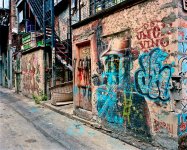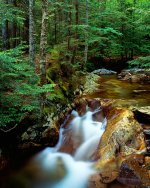Um- large format makes 120 look lame, even 4x5, the "small" LF. I gave up medium format a few years ago; when I want small, I shoot 35mm. For "real" photography, LF is the only way to go.
That said, if you don't want to (or can't) make the leap to big sheets, rouge designer's answer above is all you need to read.
You can play the 'bigger is better' game indefinitely, e.g. I don't really care for piddy little 4x5 but shoot 5x7 or 8x10 inch instead.
A lot depends on what you are going to do with your pictures. Full-page, or even double-truck, a top-quality 6x7cm or larger image will look at least as good as 4x5 inch. Once you've got over the 'Wow!' factor on the light-box, I am totally unconvinced of the advantages of going bigger than roll-film for trannies.
For that matter, I shoot far less MF tranny than I used to. I've shot a lot of it over the last 35 years or so, in all formats up to 6x17cm, but as I get older, I lean more and more towards the notion that there is a 'quality plateau', above which further technical increases in quality are of limited importance: the picture stands or falls on its visual merits, not its technical excellence.
So, unlike those who say it's addictive, I'd say it's expensive, and a hassle, and only of limited usefulness in many cases. For the right pictures, on the other hand, there is no doubt that MF gives significantly better technical quality than 35mm or sub-30-megapixel digi, and that 4x5 inch and above can give slightly more quality again. This is from experience, shooting for publication.
This is all with respect to colour, of course, in response to the original question. What I mostly shoot in MF and LF nowadays is mono, where I much prefer the tonality -- though even then, I'm not convinced that I personally take better pictures with the larger formats. It's very much a personal matter, here: what suits one person will not necessarily suit another.
Cheers,
Roger



